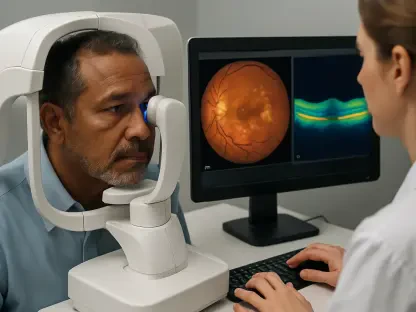In the rapidly evolving healthcare landscape, the need for accurate, accessible, and up-to-date medical product information is more critical than ever. Traditional paper labels, while reliable, often fall short in providing the dynamic and comprehensive data required by healthcare professionals (HCPs) and patients. Enter electronic labeling (e-labeling), a digital solution poised to revolutionize how medical product information is disseminated and utilized. This innovative approach has the potential to significantly enhance patient safety and markedly improve health outcomes, providing an indispensable tool for modern healthcare practices.
Enhanced Accessibility of Medical Information
E-labeling ensures that medical product information is readily accessible to HCPs, patients, and regulatory agencies. Unlike traditional paper labels, which can be cumbersome and difficult to update, e-labeling provides a streamlined, user-friendly platform for accessing critical data. This digital format allows HCPs to quickly identify and manage potential risks associated with medications, ultimately elevating the standard of patient care and reducing the likelihood of adverse reactions from outdated information.
Moreover, e-labeling can be accessed from various devices, including smartphones, tablets, and computers, making it easier for HCPs to obtain the information they need, whenever they need it. This increased accessibility is particularly beneficial in emergency situations, when timely access to accurate information can be life-saving. Furthermore, for patients, the ability to retrieve easy-to-understand medical information from any device means that they can better follow their treatment plans, reducing the risk of medication errors.
Medical professionals often face challenges when managing paper labels, which can frequently be outdated and difficult to decipher. E-labeling mitigates these issues by offering a more intuitive system where information is constantly uploaded and maintained. This capability ensures that product particulars, dosage instructions, contraindications, and other crucial details are always accurate and up to date. It also aids regulatory agencies, which can instantly access the latest product information to ensure compliance, thereby safeguarding public health.
Real-Time Updates for Improved Safety
One of the most significant advantages of e-labeling is its ability to provide real-time updates on medical product information. Traditional paper labels can become outdated quickly, leading to potential safety risks. E-labeling, on the other hand, allows for instantaneous updates, ensuring that HCPs and patients always have access to the most current data available. This capacity for real-time information adjustments is crucial for addressing emergent health risks and modifying usage guidelines based on new clinical evidence.
These real-time updates can include new safety warnings, dosage adjustments, and other critical information derived from ongoing clinical development and post-marketing experiences. By keeping all stakeholders informed with the latest data, e-labeling plays a pivotal role in enhancing patient safety and treatment efficacy. For example, if a new side effect is discovered or a drug interaction is noted, this information can be promptly shared with all relevant parties.
Integrating e-labeling helps reduce the risk of medication errors, which can have devastating consequences. With continuously updated labels, healthcare professionals can make more informed decisions that ensure patient safety and optimize therapeutic outcomes. Patients, too, benefit from this feature, as they receive the most accurate instructions for their medications, enhancing their adherence and understanding of their treatment plans. This permanent access to updated information contributes to safer healthcare environments and improved patient trust in medical products.
Cost Savings and Environmental Sustainability
E-labeling offers substantial cost savings by reducing the need for physical printed labels. The production and distribution of paper labels involve significant expenses, including printing, shipping, and storage costs. By transitioning to a digital format, pharmaceutical companies can lower these expenses and allocate resources more efficiently. This shift not only benefits the industry’s bottom line but also funnels savings toward more valuable areas, such as research and development, ultimately leading to advances in medical treatment.
Additionally, e-labeling supports environmental sustainability goals by minimizing the use of paper and printing resources. This reduction in environmental impact aligns with broader efforts to promote eco-friendly practices within the healthcare industry, contributing to a more sustainable future. The move away from paper labels means fewer trees are cut down, reducing the carbon footprint associated with paper production and disposal.
The benefits of e-labeling extend beyond financial and environmental considerations. By reducing the physical footprint of patient information, healthcare facilities can better manage space and resources, leading to a more efficient operation. Moreover, the environmental benefits of e-labeling align with the growing global emphasis on sustainability and corporate responsibility. As the healthcare sector strives to minimize its ecological impact, adopting digital solutions like e-labeling represents a significant step in the right direction.
Streamlined Regulatory Compliance
Regulatory compliance is a critical aspect of the pharmaceutical industry, and e-labeling can significantly streamline this process. Traditional paper labels require extensive time and effort to update and disseminate, particularly when post-approval changes are necessary. E-labeling simplifies these processes by allowing for quick and efficient updates, ensuring that all regulatory requirements are met promptly. This capability diminishes the lag time between regulatory changes and their implementation in the field.
This digital approach enhances regulatory agility and efficiency, making it easier for pharmaceutical companies to comply with evolving regulations. By facilitating smoother compliance processes, e-labeling helps to maintain high standards of safety and efficacy in medical products. Companies can quickly pivot to address new legal and safety requirements, reducing the risk of non-compliance and associated fines.
E-labeling also allows for better tracking and auditing capabilities. With all label changes digitally recorded, regulatory bodies can more easily monitor compliance history and respond to any issues that arise. This transparency is a valuable asset in maintaining public trust and ensuring that pharmaceutical companies uphold their responsibility for patient safety. The streamlined process afforded by e-labeling ultimately supports a regulatory environment where safety, innovation, and accountability coexist.
Enhanced Patient Engagement and Health Literacy
E-labeling plays a crucial role in enhancing patient engagement and health literacy. By providing medical product information in various formats, such as audio, visual, and multiple languages, e-labeling caters to individual preferences and needs. This customization makes it easier for patients to understand their treatments, leading to better adherence to medication regimens. Empowering patients with clear and accessible information fosters higher levels of engagement in managing their health.
Furthermore, e-labeling allows for interactive features, such as adjustable font sizes and audio formats, which are particularly beneficial for individuals with visual impairments. By making information more accessible and comprehensible, e-labeling fosters better communication and understanding between patients, their families, and caregivers. These interactive tools not only support patient independence but also contribute to a deeper understanding of their health conditions and treatments.
Access to dynamically presented information improves health literacy, enabling patients to make informed decisions about their healthcare. This, in turn, can lead to improved health behaviors and outcomes. Health literacy is a crucial component of patient-centered care, and as patients become more knowledgeable about their medications and treatments, they are more likely to adhere to their prescribed regimens. E-labeling, therefore, serves as a valuable bridge between complex medical information and patients’ everyday lives.
Improved Health Outcomes Through Informed Decisions
Access to accurate and timely medical product information is essential for making informed decisions, which in turn leads to better health outcomes. E-labeling provides HCPs and patients with the data they need to make well-informed choices about treatments, reducing the likelihood of medical errors and improving overall patient care. Informed decision-making is a cornerstone of effective healthcare, and e-labeling enhances this by offering comprehensive, up-to-date information.
By enhancing medication adherence and reducing the risk of adverse events, e-labeling contributes to improved health outcomes and lower healthcare costs. This digital approach empowers patients to take an active role in their healthcare, leading to more positive and sustainable health results. When patients are informed and engaged, they are more likely to follow their treatment plans diligently, reducing hospital readmissions and improving the overall quality of life.
HCPs also benefit from the streamlined access to updated medical information provided by e-labeling. With the latest data at their fingertips, they can make more accurate diagnoses and treatment recommendations. This enhanced decision-making capability reduces the risk of errors and improves patient satisfaction, as treatments are more closely aligned with the most recent clinical guidelines and evidence. E-labeling thus supports a higher standard of care across the healthcare continuum.
Strengthening Global Supply Chain Efficiency
E-labeling has the potential to strengthen global drug supply chains by enabling faster dissemination of information and facilitating the management of drug shortages. By allowing for the sharing of labeling information between countries and eliminating the lead time for printing, e-labeling ensures quicker access to new medications. This capability is particularly valuable in addressing global health challenges, where timely access to accurate information is paramount.
This enhanced supply chain resilience is particularly valuable during crises, such as the COVID-19 pandemic, when timely access to accurate information and medications is crucial. E-labeling supports a more efficient and responsive global pharmaceutical supply chain, ultimately benefiting patient care worldwide. By streamlining international communication and collaboration, e-labeling can help to mitigate the impact of drug shortages and ensure that patients receive the medications they need when they need them.
Global health crises have underscored the importance of resilient and adaptable supply chains. E-labeling enhances this resilience by providing a flexible and responsive system for managing medical product information. In times of emergency, the ability to quickly update and disseminate crucial information can make a significant difference in patient outcomes. E-labeling thus represents a forward-thinking approach to global health management, supporting a more coordinated and effective healthcare response.
Adoption Trends and Future Prospects
As the healthcare landscape rapidly evolves, the demand for accurate, accessible, and current medical product information becomes increasingly crucial. Traditional paper labels, though reliable, often fail to deliver the comprehensive and dynamic data needed by healthcare professionals (HCPs) and patients alike. This is where electronic labeling (e-labeling) steps in, offering a digital solution that promises to transform how medical product information is shared and used. E-labeling not only provides timely and detailed information but also has the potential to greatly improve patient safety and enhance health outcomes. By making crucial data readily available and easier to update, e-labeling becomes an indispensable tool for modern healthcare practices, aiding in delivering better care and more informed decision-making. This innovation ensures that both HCPs and patients have the necessary information at their fingertips, paving the way for a future where healthcare is more efficient, safe, and patient-centric.









